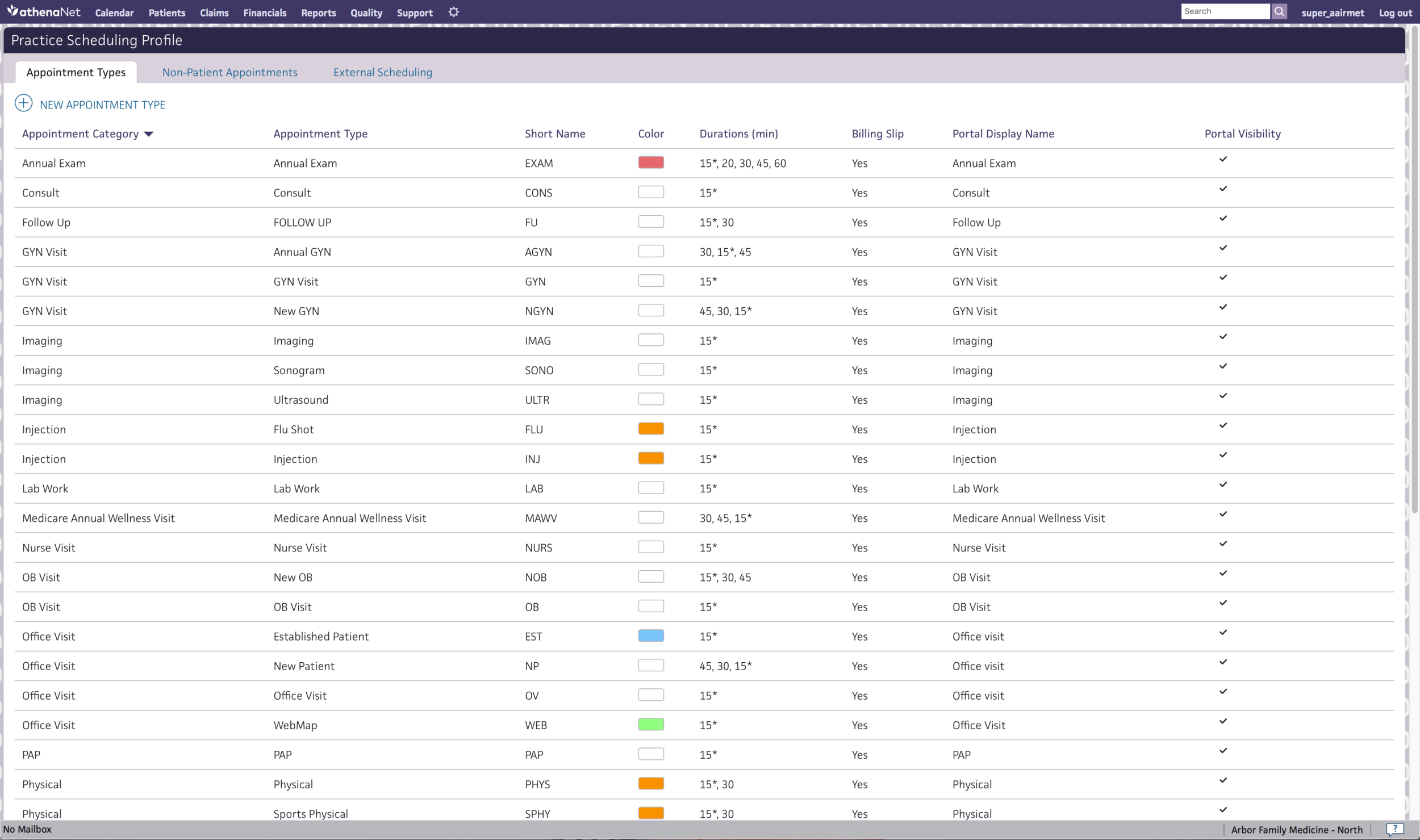athenahealth: Scheduling Administration
Problem: Scheduling administration is reserved for the back office and if it isn’t broken don’t fix it. Really just ignore it because the users don’t pay for it and don’t complain loud enough. For nearly 20 years the scheduling product at athena hasn’t been updated, and the users are on computers just as old in the back office grinding away making antiquated software work for their needs. This required mountains of binders, excel docs, and one-off processes.
Solution: Reinvigorate the existing tool to match current mental models, accelerate current workflows, and reinvent this square wheel into something a practice manager could learn in a month instead of years of ‘figuring it out.’
Target User: The ignored, overworked practice manager
Role: Designer, research support and lead
Approach: This was not athena’s first try to replace their scheduling service, so we had a large amount of past knowledge, research, and designs we learned from. When I joined the team they had the foundational work done with a partially functional product. We worked to improve current designed based on usertesting, design features targeting our enterprise clients, and develop marketing materials and onboarding guides.
Result: The product is still in use with over 100 practices using it today
Product uses:
Provider settings and rules. Each provider has their unique preferences and rules, the most common being limit and buffer.
Template management system where the schedules for the providers are set up into blocks of time.
Appointment type management where users can add, edit, or delete appointment types.
Online scheduling settings allowing users to set up guidelines and rules encouraging patients to self schedule online.
Provider Landing Page
Continual improvements
Visual improvements and graphics for the template creation process, and I led an effort to ensure that the product met in accordance to WCAG 2.0 AA accessibility standards.
Migration
Migrating from the old framework to the new one proved to be a daunting task. We implemented a self service onboarding product for any new users. Additionally we created a step by step readiness center to prepare users for the change which included the instructional videos seen below (my role was to collaborate with our copy editor on the scripts, create the videos, and then to edit the final videos), and we created a migration tool that would take users through the difficult task of changing all of their appointment types, and their templates.
Overview
Creating a template
Provider scheduling profiles
Practice scheduling profile
Service blueprint
We ran a workshop with the other scheduling product owners to create a service design blueprint of a complete booking experience. We used this to see where we had dependencies on each others products and to identify potential opportunities, missteps, duplicate work, and to provide clarity to the team.











